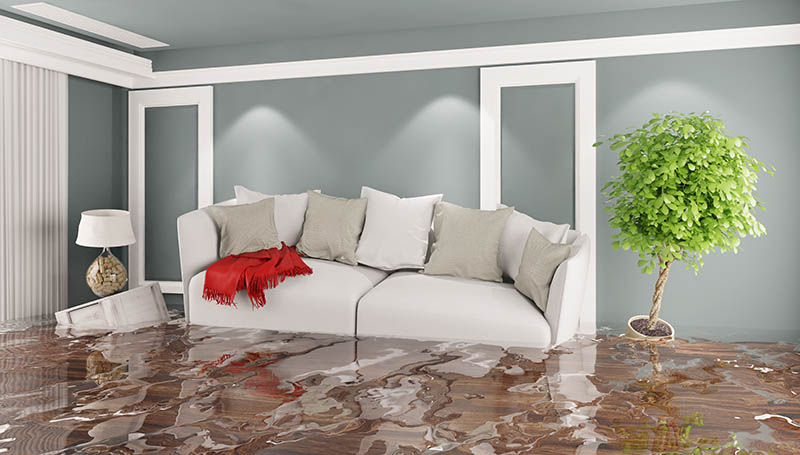This article listed below in relation to How Fast Water Damage Can Ruin Your Home is seriously informative. Give it a go and make your own personal final thoughts.

Leaks not only cause waste of water but can also cause unneeded damages to your house as well as advertise undesirable organic growth. Unfortunately, water leakages could go undetected because a lot of the pipework in our house is hidden. By recognizing as well as looking for everyday scenarios that cause leakages, you can secure your home from future leaks and also unnecessary damages. Today, we will check out six leakage causes that might be causing your pipelines to leak.
Elbowing in roots
The majority of water leaks begin outside the house rather than inside it. If you observe a sudden reduction in water stress, say in your faucet, take time to go out and analyze your yard. You may notice wet spots or sinkholes in your backyard, which might imply that tree origins are invading water lines causing water to leak out. You can have your plumber look for intrusion, specifically if you have trees or hedges near your residential or commercial property.
Corroded water supply
This may be the reason of staining or bending on your water pipes. If our plumbing system is old, consider changing the pipelines given that they are at a greater threat of deterioration than the more recent versions.
Defective Pipe Joints
The point at which your pipes connect is regularly the weakest web link in the waterline. Pipeline joints can deteriorate over time, resulting in water leakages. However, most of pipeline joints are not quickly visible. If you have noisy pipelines that make ticking or banging sounds, particularly when the hot water is activated, your pipeline joints are probably under a lot of stress. It is a good idea to have your plumber check your system yearly.
Instantaneous temperature level changes.
Severe temperature modifications in our pipelines can trigger them to increase as well as contract suddenly. This expansion and also tightening may trigger cracks in the pipelines, especially if the temperature level are below cold.
Poor Water Connectors
At times, a leak can be triggered by loosened tubes and pipes that provide your devices. In case of a water links leakage, you may see water running directly from the supply line or puddles around your home appliances.
Obstructed Drains
Clogged drains may be frustrating and inconveniencing, but they can often wind up creating an overflow resulting in rupture pipelines. Keep eliminating any kind of products that may go down your drains that might obstruct them to avoid such hassles.
All the above are sources of leaks yet not all water leaks result from plumbing leaks; some leaks might originate from roof covering leaks. All leaks should be repaired instantly to prevent water damages.
Leakages not just cause waste of water but can also cause unnecessary damage to your home as well as advertise undesirable natural development. By looking and also comprehending for everyday scenarios that trigger leaks, you can safeguard your home from future leakages and unnecessary damage. Today, we will look at six leak creates that may be causing your pipelines to trickle.
At times, a leakage can be created by loosened hose pipes as well as pipes that supply your appliances. In case of a water links leakage, you may notice water running directly from the supply line or pools around your home appliances.
How To Check For Water Leak In Your Home
How To Check for Leaks
The average household's leaks can account for nearly 10,000 gallons of water wasted every year and ten percent of homes have leaks that waste 90 gallons or more per day. Common types of leaks found in the home are worn toilet flappers, dripping faucets, and other leaking valves. These types of leaks are often easy to fix, requiring only a few tools and hardware that can pay for themselves in water savings. Fixing easily corrected household water leaks can save homeowners about 10 percent on their water bills.
To check for leaks in your home, you first need to determine whether you're wasting water and then identify the source of the leak. Here are some tips for finding leaks:
Take a look at your water usage during a colder month, such as January or February. If a family of four exceeds 12,000 gallons per month, there are serious leaks.
Check your water meter before and after a two-hour period when no water is being used. If the meter changes at all, you probably have a leak.
Identify toilet leaks by placing a drop of food coloring in the toilet tank. If any color shows up in the bowl after 10 minutes, you have a leak. (Be sure to flush immediately after the experiment to avoid staining the tank.)
Examine faucet gaskets and pipe fittings for any water on the outside of the pipe to check for surface leaks.
Undetected water leaks can happen without the home or business owner even realizing. If you suspect a water leak, but not able to find the source. It is time to contact a professional water leak detection service, The Leak Doctor.
How To Find a Water Leak In Your Home
https://www.leakdoctor.com/blog/How-To-Check-For-Water-Leak-In-Your-Home_AE197.html

I came across that write up about How to detect water leaks in your home while perusing the web. Liked our blog posting? Please share it. Let others find it. I praise you for your time. Kindly come visit our site back soon.
Schedule Service